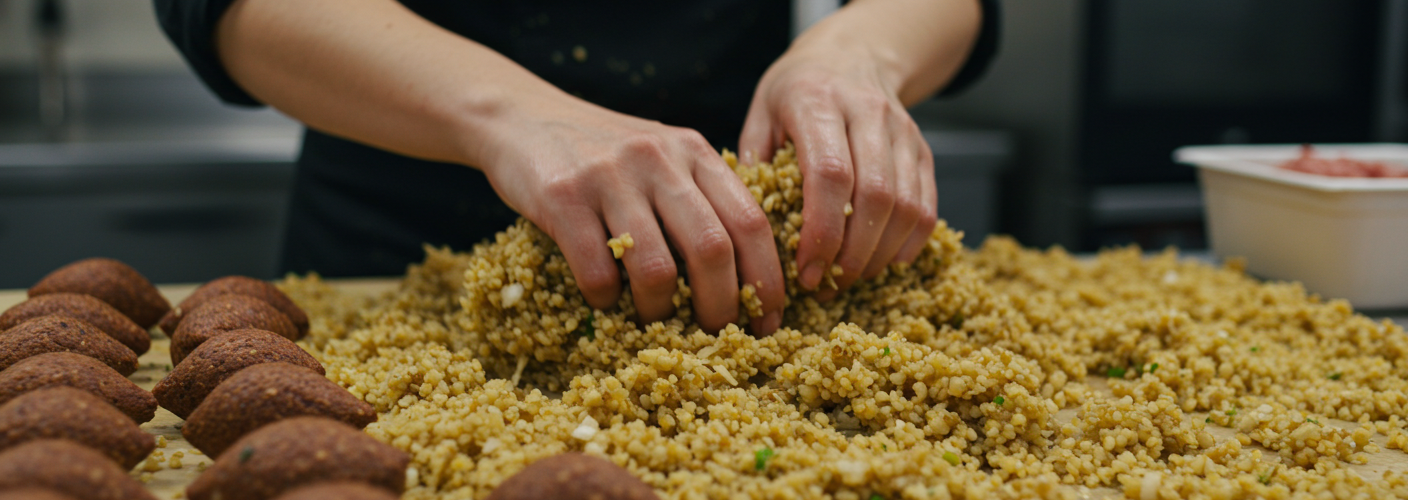Kibbeh is more than just a dish; it’s a celebration of flavors, culture, and shared experiences. Rooted in Middle Eastern cuisine, this dish showcases the rich blend of ingredients, techniques, and histories that have been passed down through generations. Kibbeh is made primarily from bulgur wheat, minced onions, finely ground meat, and a mélange of spices, which together create a symphony of tastes and textures.
What Makes Kibbeh Special?
At its core, kibbeh is a testament to the ingenuity of home cooking. The base of bulgur wheat provides a hearty texture and serves as a canvas for the other components. The process begins by soaking the bulgur, allowing it to absorb flavors from the added spices and ingredients. Minced onions contribute sweetness and depth, while the finely ground meat—often lamb or beef—creates a savory richness that is undeniably satisfying.
Spices play a crucial role in distinguishing kibbeh from other dishes. Commonly used spices include allspice, cinnamon, and cumin, each adding its unique profile to the overall taste. The blend of spices can vary significantly from one family to another, often reflecting regional preferences or personal recipes. This variability ensures that every bite of kibbeh is an adventure in flavor, offering a glimpse into the cook’s history and tradition.
Shapes and Variations
Kibbeh can be shaped into balls or patties, but the techniques don’t end there. It can also be prepared in various forms, including kibbeh nayeh, which is a raw version served with olive oil and fresh vegetables, and kibbeh bil sanieh, a baked version that layers the bulgur and meat mixture in a dish. Each presentation is a celebration of texture, flavor, and visual appeal.
The versatility of kibbeh extends beyond its base ingredients and shapes. Vegetarian versions are popular, replacing meat with a mixture of roasted vegetables, chickpeas, or lentils, making it accessible to those with dietary restrictions. This adaptability highlights kibbeh’s ability to bring people together, regardless of their dietary preferences.
Cultural Significance
Kibbeh holds a cherished place within Middle Eastern culture. Traditionally, it is a dish prepared for gatherings and celebrations, symbolizing hospitality and the joy of sharing meals with family and friends. Making kibbeh can be a communal activity, with family members gathering to chop, mix, and shape the ingredients, reinforcing bonds and creating lasting memories.
This dish’s significance extends beyond the kitchen. Kibbeh reflects a rich tapestry of history and cultural exchange, as its variations can be found across different regions, including Lebanon, Syria, Egypt, and beyond. Each culture infuses its unique ingredients and techniques, creating a diverse range of kibbeh that is both traditional and innovative.
Conclusion
Kibbeh is more than just a meal; it’s an embodiment of tradition, community, and a celebration of culinary arts. Its simple yet rich ingredients combine to create a dish that is both nourishing and flavorful, capable of bringing people together in a shared experience. Whether served at a family gathering or a festive occasion, kibbeh continues to honor its heritage while adapting to modern tastes, ensuring its place on tables around the world for generations to come. If you haven’t yet explored the world of kibbeh, it’s time to dive in and savor this delightful dish that is sure to impress.




Add comment